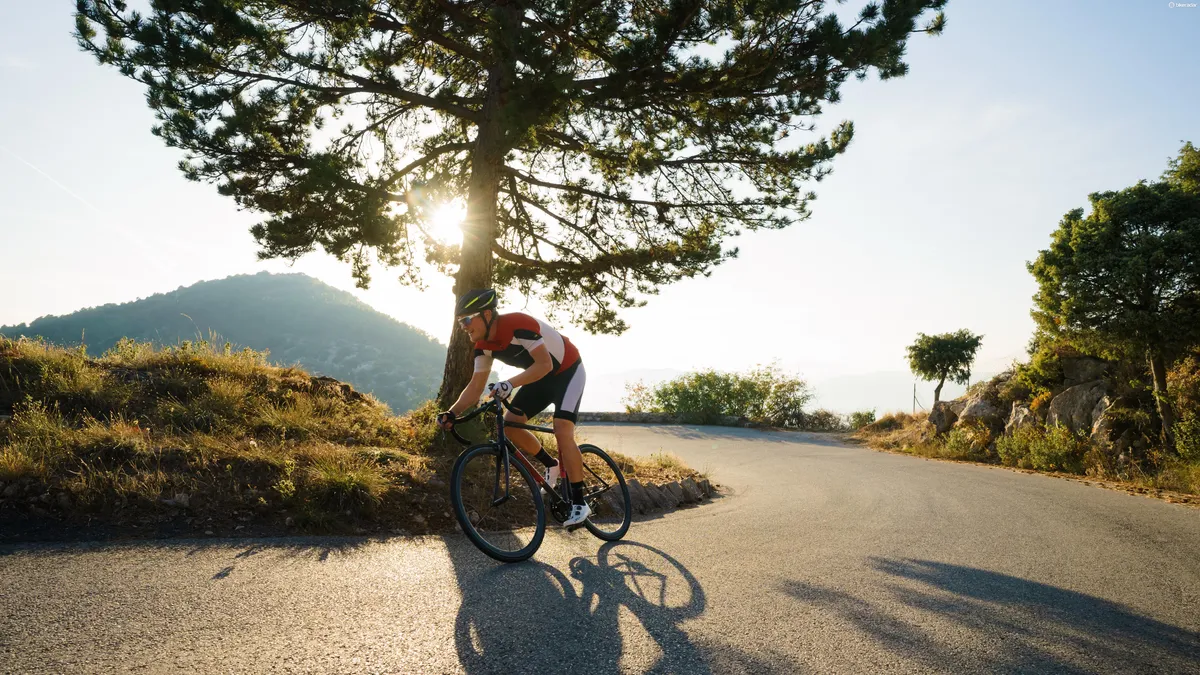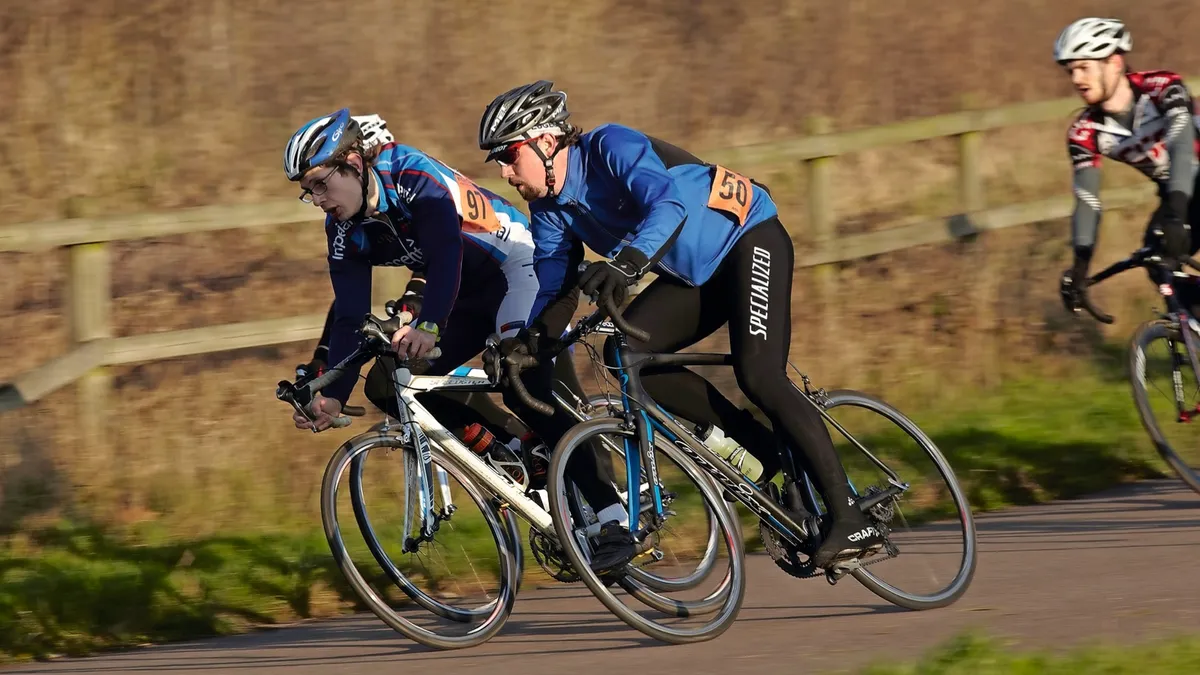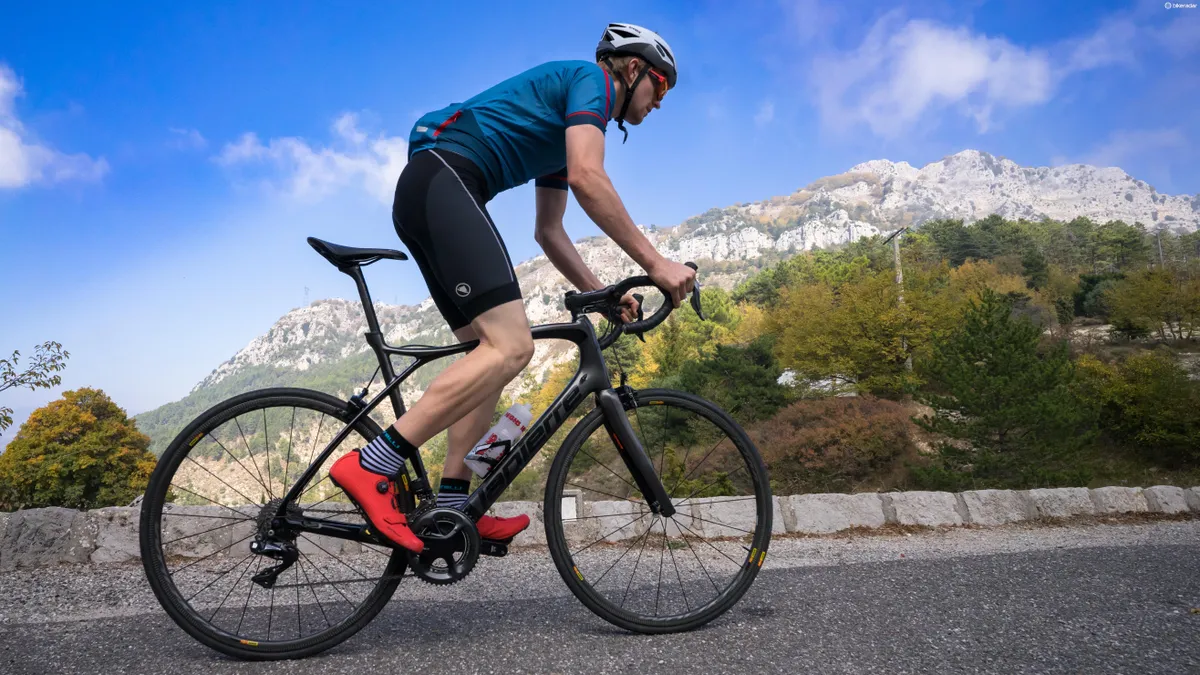Former pro cyclist Greg LeMond summed up cycling progress succinctly: "It never gets easier, you just go faster." What he meant was that all the hard training is not so that you can sit back and cruise when your goal event arrives, but so that on the big day you can deliver the best ride of your life.
“But don’t forget your recovery,” warns Flammerouge.je coach Tony Williams. “You’ve got to hurt for the right proportion of your training for the right amount of time; you only actually get fitter and faster during recovery periods.”
So let’s assume you’ve already built your base fitness. Now you’re ready for threshold intensity work. These are the workouts that will help you achieve your cycling goals. It’s suffer time...
1. The S.H.I.T.S.
Why? These Seriously Hard Interval Training Sessions are great for targeting your VO2 max — that is the maximum amount of work you can do before your body starts working anaerobically (without oxygen). These sessions will build all-round endurance strength and toughen you up for when you need to dig deep.
Whether it’s for short, sharp climbs, a last gutsy push of pace before a final race sprint or the last few minutes of a time trial, one session of S.H.I.T.S. a week in the last couple of months before an event will target your aerobic capacity and give you a reserve tank when you need it.
How? In the big ring, start with the 16t cog or easier. The longer the interval you choose, the easier the gear should be. Build up to race cadence (90rpm or more) over the first 30 seconds of the interval then sustain that intensity for the duration. This session can be done on a smart trainer or incorporated into one of your weekly endurance rides.
Week 1: 3 x 7min flat out (over 90 percent of maxHR), in the big ring and 16t cog, with 3min recovery between each effort
Week 2: 4 x 5min flat out in the big ring and 15t cog, with 2min recovery between each effort
Week 3: 7 x 3min flat out in the big ring and 14t cog, with a minute of recovery in between
Week 4: Take this week off as an adaptation week, then try them in reverse weekly order
2. 60-second killers
Why? If you’re into road racing or crits, these short but seriously sharp speed intervals will help you demoralise your rivals as you appear to easily respond to repeated attacks. You can add them to a weekly endurance session or as a standalone turbo trainer session that will take you under an hour including warm-up and down.
How? After a good 10-minute warm-up, using the big ring and a cog in the middle of the rear cassette, get up to ‘lead-out’ race pace in the first five to 10 seconds of the interval, without jumping, and then pedal at a sustainable flat-out pace for the rest of the minute. After the minute back right off to recovery pace for a minute and then go again. Do five of these intervals followed by a five-minute period of recovery.
Repeat from the beginning — if you’re on form you might be able to do three complete sets. As soon as you can’t complete a full minute at your chosen intensity, stop the session and start your cool-down.

3. Escalating Intervals
Why? If you want to get better at long hard hills, time trials, and draggy uphill race finishes, you need to learn to tolerate soaring lactate levels and failing legs — you need to learn to suffer, and that’s where this session comes in...
You can incorporate this routine into one of your mid-week road rides or simply suffer at home alone on your trainer. In the latter case, you’ll need a trainer that doesn’t ramp up the resistance as you change up through the gears.
How? Warm up for about five minutes — it doesn’t need to be long, as you’ll ease into the session fairly steadily. Starting in the big front ring and about 19t on the back, build up to race pace cadence (about 90rpm) — this should be pretty easy to start off.
After a minute, change up to the 18t for two minutes' work, then the 17t for three minutes, the 16t for four minutes, the 15t for five minutes, the 14t for six minutes and the 13t for seven minutes.
There’s 28 minutes of uninterrupted, increasingly hard work here, so inevitably your cadence will drop as you rise through the gears and the lactate builds, but hold your form as long as you can.
If you start to rock and sway on the trainer then back off and come back down the gears and start your cool-down. If you don’t get all the way to the 13t cog, try again next week!
4. 10:20 aerobic development
Why? Speed endurance is what you need in order to stick with that fast moving pack, saving precious time and energy on a big sportive, or to stay away with the winning break on race day. This aerobic development interval session will help your lactate tolerance, raise your high-speed cruising pace and strengthen your aerobic system.
This speed workout is best done just once a week for three weeks followed by a recovery week — and only after you’ve already built a solid endurance base. You can either incorporate it into a longer mid-week ride or do it as a standalone turbo session.
How? At the end of your warm-up, pick a gear one cog tougher than your cruising gear and pick up the pace to a high tempo intensity, then start the interval and quickly — without jumping — step up to a sustainable full-on lead-out pace over about five seconds. Hold this intensity for another five seconds then back off to around tempo pace again for 20 seconds. Don’t back off completely in the recovery period, keep the pace relatively high, this is a speed not strength session. Repeat the intervals for the next 10 minutes until you’ve done 20 10-second efforts.
Back right off to recover at a soft-pedalling snail’s pace for five minutes then repeat the 10-minute set of 20 10-second intervals. After another five-minute recovery, if you’re on race-winning form, you might manage a third set. Wherever you get to in the session, once the quality of the interval drops then finish the session and start your warm-down.
5. 30-second SMInts
Why? These Supra-Maximal Intervals are good in the four weeks up to a big event for boosting peak power and helping you improve your fast cruising speed.
How? Do this on the road as it works best if you can give it your all. You’ll need a quiet, gradual climb if you’re after building power, or a false flat for speed. After warming up, start with the big ring and about the 14t sprocket on the rear cassette (use a harder gear as the weeks progress), and slow to almost a standstill 20 metres from the bottom of the hill.
When you’re ready, stand up and give it your all. Do everything you can to stay on top of the gear and keep going flat out for 30 seconds. Take at least five minutes to recover and then go again. Five repeats is good.
6. Drop Intervals
Why? If you want to win, you have to learn to love lactate. It’s best saved for once a week in the four to six weeks’ run-up to a big race. Despite the out-of-saddle work, this session is still best for the turbo due to the state it will leave you in!
How? After a 10-minute warm-up, build up to full lead-out pace, get out of the saddle and hit the interval with your flat-out sprint in the big ring/13t cog. About 10 seconds in, keep pedalling out of the saddle and change down. Then 10 seconds later, change down again, and again three more times until 60 seconds is up — at which point you should be in about the 18t or 19t. Recover, and go again.
Once you’ve performed the prescribed number of sets, soft pedal for five minutes and then start another set. When you can’t complete a full 60-second effort, start your warm-down of at least 10 minutes.
Week 1: At least three sets with 4min recovery in between
Week 2: At least four sets with 3min recovery in between
Week 3: At least five sets with 2min recovery in between
Week 4: Go back to week 1 as a recovery/adaptation week

Top tips for mental toughness to help you get through the hard times
According to sports psychologist Dr Lee Crust, mental toughness consists of four main components: self-confidence, commitment, challenge and control.
Self-confidence
“Some people get too nervous before an event,” says Crust. A popular relaxation technique is Progressive Muscle Relaxation, combined with deep breathing.
Tip: Sit comfortably with your eyes closed and sequentially tense then relax all the muscles working down from your head to your toes. Tense each group for 10 seconds, and then relax for 25 before moving on to the next set. Breathe in deeply as you tense then slowly breathe out, in and out again in the relaxation phase.
Commitment
“One of the best ways to combat apathy or keep going when boredom sets in on a long ride is to strengthen your commitment by goal setting.”
Tip: Performance goals need to be specific, measurable, challenging but attainable, time-based and written down. They need to be both short- and long-term, with some of the short-term goals stepping stones to long-term ones.
Challenge
“Replaying positive images and experiences in your mind before an event, or a feared descent, is a useful tool.”
Tip: Re-imagining and replaying the perfect sprint or cornering sequence will help boost confidence, block negative thoughts and even boost your body’s motor controls when you perform the task for real.
Control
“Self-talk is cues or phrases an athlete repeats to themselves to control their thoughts or actions.”
Tip: Use self-talk to boost motivation, with phrases such as “Keep pushing it!” or a cue to stay focused on a specific element, such as “smooth circles” to improve pedalling technique.
Article last updated 17 January 2018
